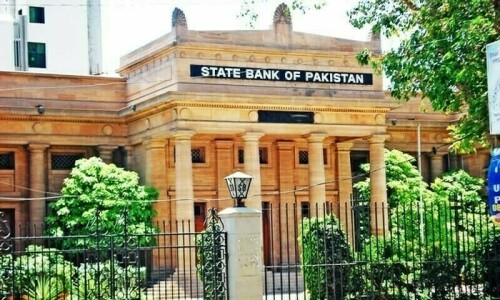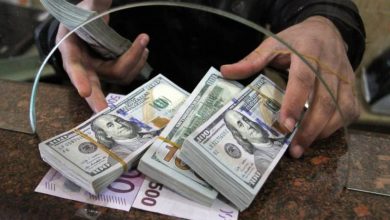SBP’s policy transmission — a commentary

Financial analysts of different brokerage houses begin speculating about monetary policy changes two or three weeks before their announcement. Newspapers publish these projections, and TV channels air them.
Even Reuters and Bloomberg release polls of analysts’ views just one or two days before the State Bank of Pakistan’s (SBP) monetary policy committee meeting.
There’s nothing unusual in releasing such polls shortly before the monetary policy review. But publishing or airing individual analysts’ views of brokerage houses only weeks before the policy announcement creates confusion. Traders and local businesses that don’t have their own experts for forecasting inflation and interest rate movements, unlike multinational corporations, banks, and big brokerage houses, fall victim to this confusion.
The SBP may consider reviewing its monetary policy every six weeks instead of every two months to eliminate this confusion, which makes transmitting monetary policy more difficult. Several central banks worldwide, including the United States Federal Reserve and the European Central Bank, do the same.
In its last monetary policy meeting on April 29, the SBP kept its key policy rate unchanged at 22 per cent. And there were some valid reasons for doing so. Even though inflation numbers have recently slipped somewhat, ongoing energy price hikes, uncertainty regarding supplies and an increase in the cost of trade amidst the Middle East military conflict may decelerate price declines.
Effective broadcast of monetary policy signals can help markets make wiser decisions, facilitating growth amid moderate inflation in the medium and long term
Meanwhile, local food inflation remains high and may rise even higher as lesser-than-expected rains eclipse future harvests of food crops. Crop-switching and over-reliance on some crops have narrowed the space for pulse cultivation while rising exports of meat have taken prices of beef and mutton to new heights.
Besides, prospects of faster GDP growth in the next fiscal year starting July 1 also call for caution — demand-driven inflation may be visible once again. Many analysts believe the rupee is currently overvalued and needs downward adjustment.
If the rupee starts losing its strength, either because of its artificial weight or delays in foreign exchange inflows from international financial institutions and friendly countries, imported inflation will affect the overall price line. Considering all these scenarios, the central bank has not risked lowering the interest rates, ignoring the demands of the business community.
For the central bank, the entrenchment of inflationary pressures due to the above-mentioned or similar factors needs to be avoided because that would mean it wouldn’t be able to move ahead with its planned inflation targeting. Anchoring monetary policy at a medium-term inflation target — between 5pc and 7pc by December 2025 — is the first requisite of the policy.
Of course, inflation targeting can upset other macroeconomic targets, including GDP growth. Still, by now, it has become clear to all that the SBP’s monetary policy does not take economic growth into account. Our central bank has already shunned this practice after gaining independence backed by the International Monetary Fund (IMF) through a legislative move.
Hypothetically, if the FBR’s ongoing fiscal reforms meet their objectives, then Pakistan may gradually enhance its tax-to-GDP ratio, which in turn could lead to the fiscal discipline required for the central bank of an economy to practice inflation targeting smoothly
Could there be a more opportune time for the SBP to exercise its new-found independence than now, as Pakistan is again desperately knocking at the IMF’s door for a big $7bn to $8bn loan?
Suppose the ongoing fiscal reforms — and a drive to get rid of corrupt and negligent officials — of the Federal Board of Revenue meet their stated objectives. In that case, Pakistan may gradually enhance its tax-to-GDP ratio. This, in turn, may lead to the fiscal discipline required in an economy for its central bank to practice inflation targeting smoothly.
However, if these reforms go astray and the drive against corrupt and negligent officials proves to be a political farce, then discipline will remain elusive. In that case, SBP’s self-styled inflation targeting would not only continue to fail in anchoring inflation at the desired levels but would also compromise GDP growth.
Similarly, if the government’s excessive borrowing from commercial banks is not contained in one or two fiscal years and if enough room is not created for banks to lend to the private sector, GDP growth will again remain low. In that case, easing of monetary policy would not help revive GDP expansion at the desired rate, and inflation would remain above the target due to supply shocks.
Effective transmission of monetary policy signals to the markets and the government is supposed to help them make wiser decisions that may eventually facilitate growth amidst moderate inflation in the medium and long term.
Even if monetary policy transmission becomes more effective, say, after more frequent announcements of policy rates, that may not achieve this objective alone. The government and financial markets must play their role, and an overall conducive environment must be created for the smooth operations of companies and businesses.
Since Pakistan’s fragile external economy has been at the centre of many of its economic woes, capping fresh external borrowings is necessary. That is possible only when the country’s exports, remittances, and foreign direct investment grow rapidly. When and how exactly this objective can be obtained, only time will tell.
For now, let’s hope that the efforts being made to boost information technology (IT) and IT-enabled services exports grow dramatically and our friendly countries in the Gulf Cooperation Council region pour in their promised “billions of dollars” into viable projects swiftly. If these two things don’t happen in the next fiscal year, Pakistan’s economy will be in deeper trouble.
Published in Dawn, The Business and Finance Weekly, May 6th, 2024
Follow Dawn Business on Twitter, LinkedIn, Instagram and Facebook for insights on business, finance and tech from Pakistan and across the world.





